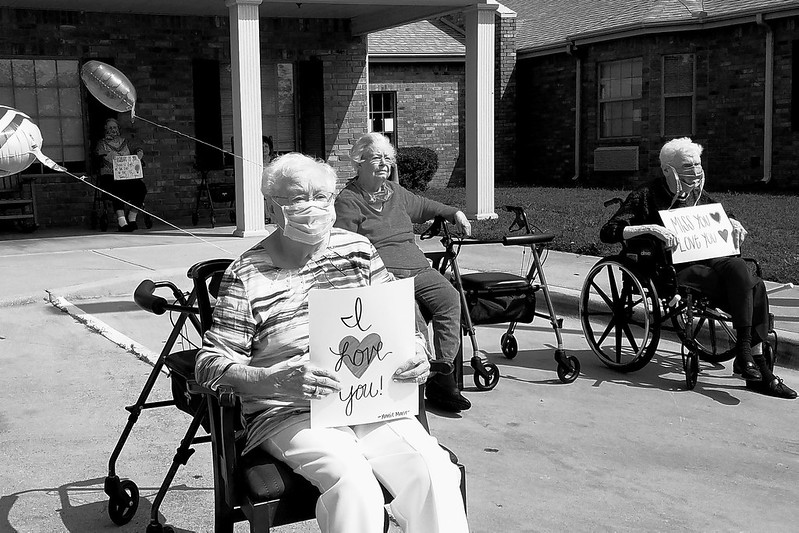
A recent major spike in new cases of COVID-19 in the U.S. has prompted physicians nationwide to express concern about the situation in long-term care facilities and nursing homes.
The current conditions inside these homes affect many people—not just the seniors inside care facilities, statistically at a higher risk of both contracting and experiencing severe illness or death due to the virus; but also for the essential workers, putting their lives on the line for their patients.
In fact, nursing home workers are now considered to have the most dangerous jobs in the U.S.—as shown by their fatality rates. Without intervention, working in a nursing home is likely to become more than twice as deadly as previous years’ deadliest occupations, like logging and commercial fishing.
Yet, these workers are not receiving the supplies or testing necessary for them to be able to do their job safely. This is to say nothing of the compensation they deserve—hence calls for national hazard pay for nursing home workers.
Now, recent research from Harvard shows that infection rates inside nursing homes and other long-term care facilities tend to mirror the rates of the communities surrounding them—and this is bad news, particularly for facilities located in more urban areas, which are beginning to loosen restrictions.
Given that older people are statistically at a higher risk of experiencing severe illness from COVID-19, and that facility fatality rates are already higher than the national average, this connection is concerning—because identical infection rates will mean more deaths in facilities.
Physicians argue this spike in cases is a major reason for concern, given that many states are proceeding with reopening plans—which can include reopening these facilities to the public, and allowing visitors again.
Physician Groups Urge “Caution and Thoughtful Approach In Reopening Facilities”
Prompted by this distressing news, the American Health Care Association (AHCA) and National Center for Assisted Living (NCAL) have addressed a letter to the National Governors Association (NGA) and state governors. The appeal warns of spikes in COVID cases in assisted living homes nationwide, and urges the governors to exercise caution in their reopening plans.
“Nursing homes and assisted living communities cannot stop the virus by ourselves—not without testing, personal protective equipment (PPE), staff support and funding, and not without support from the public health sector,” said Mark Parkinson, AHCA/NCAL president and CEO, and Scott Tittle, NCAL executive director, in the letter.
They say if states intend to proceed with re-openings, the concerns of long-term care facilities must be addressed, in order to avoid potential loss of life.
In their letter, these institutions outline several key requests for the governors and state public health agencies:
Expediting lab processing time and a solution for on-site testing with reliable and rapid results.
A recent survey conducted by AHCA/NCAL revealed that for nearly nine in 10 nursing homes and assisted living communities, it takes two days or longer to obtain test results. Physicians and care providers argue that it is not enough for testing to be reliable — in order for it to be an effective technique in stopping virus spread, it must also be timely.
Provide additional support for PPE supplies—especially N-95 masks.
There is currently a concerning shortage of PPE in long-term care facilities nationwide. The letter asserts that nearly 20 percent of nursing homes have reported to the CDC that they either do not have or have less than a one-week supply of PPE—and more than half of assisted living communities have less than a two-week supply of N-95 masks and gowns.
These facilities cannot be expected to reopen without the proper equipment to ensure staff and resident safety—state governments must address the PPE shortage.
Work in close coordination with long term care providers on reopening facilities to visitations.
Given this recent spike, providers are extremely concerned about the prospect of reopening facilities to outside visitors. Providers must have a say in these policy decisions—and be able to maintain a high level of control over both the pace and conditions of reopening.
The federal government must promptly address these issues, and make the decision to value human lives more than the U.S. economy, if they wish to ever see an end to the pandemic.












